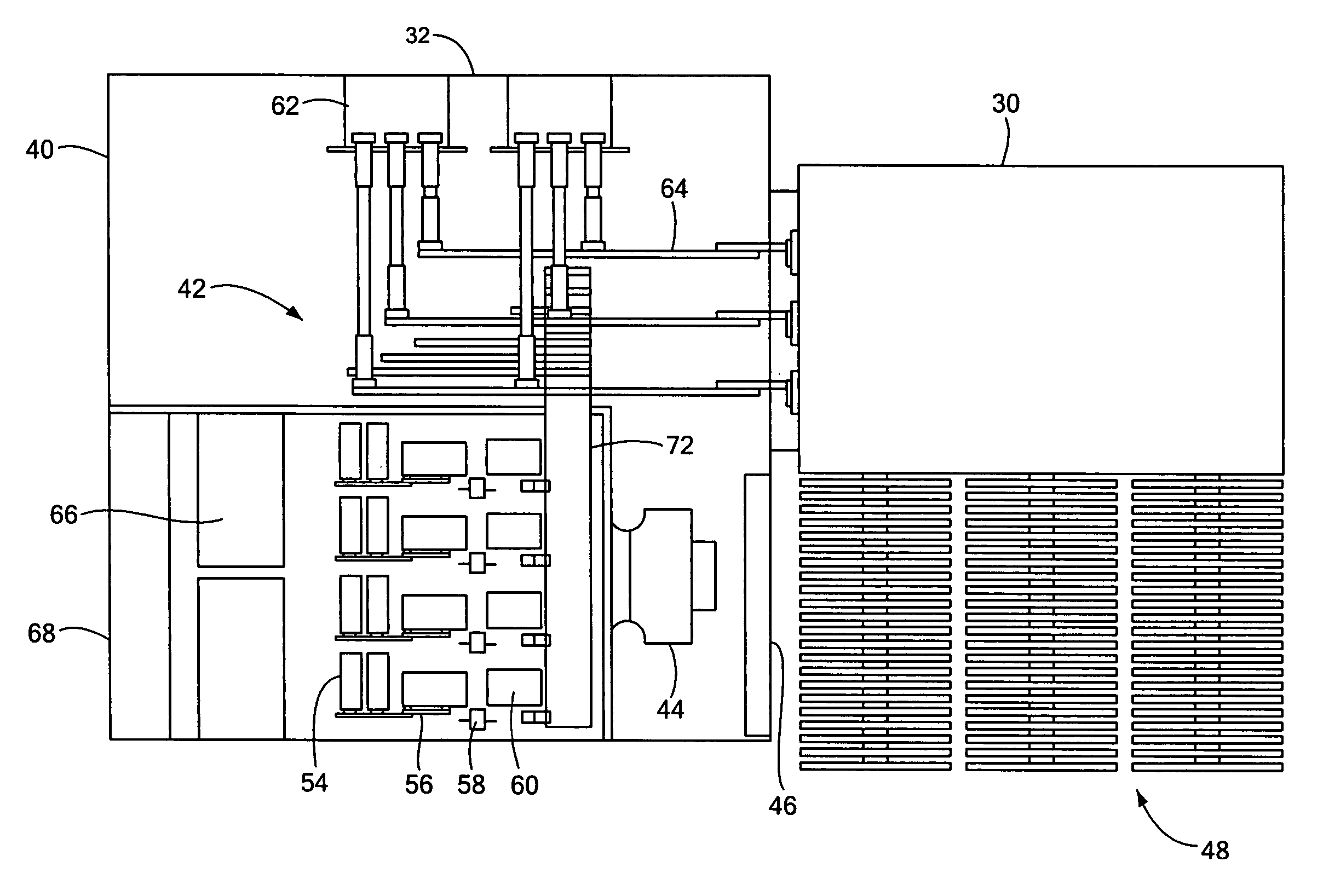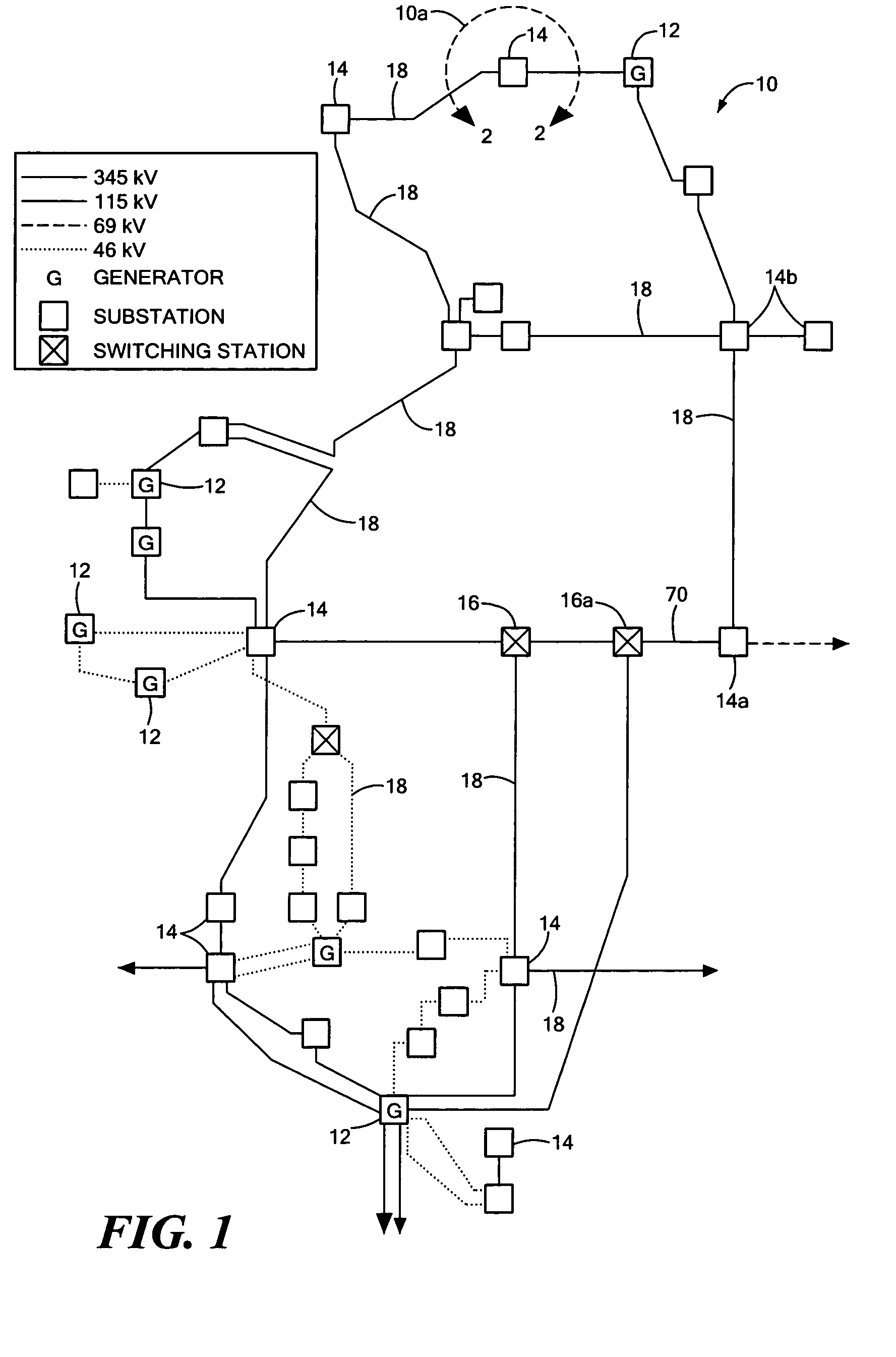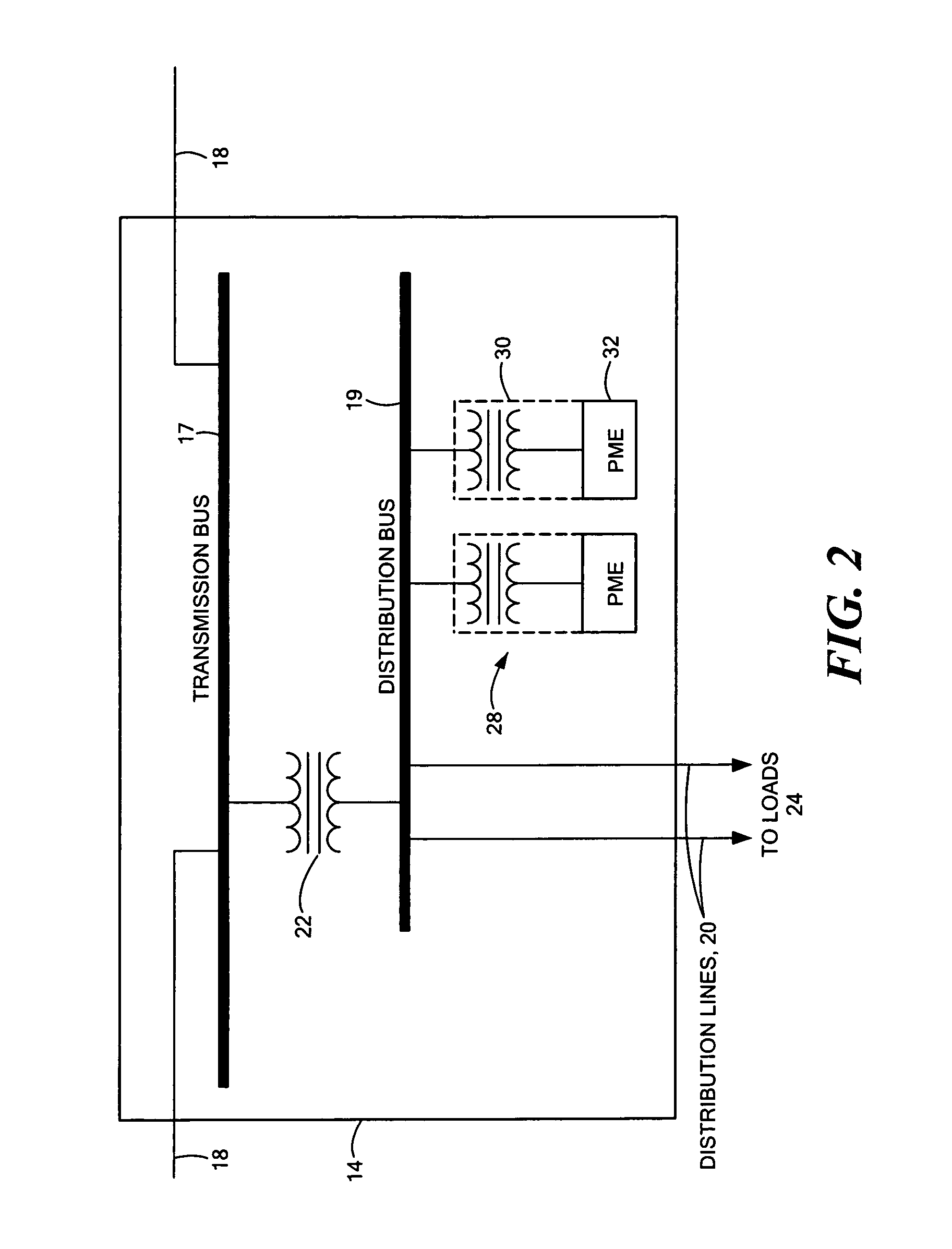Supplementary transformer cooling in a reactive power compensation system
a technology of reactive power compensation and transformer cooling, which is applied in the direction of transformer/inductance cooling, transformer/inductance details, electrical equipment, etc., can solve the problems of voltage instability, voltage collapse, voltage instability on the grid, etc., to reduce ambient noise, facilitate airflow direction, and prevent airflow from dispersing
- Summary
- Abstract
- Description
- Claims
- Application Information
AI Technical Summary
Benefits of technology
Problems solved by technology
Method used
Image
Examples
Embodiment Construction
[0039]Referring to FIG. 1, a portion of a utility power network includes a transmission network 10 having generators 12, substations 14, and switching stations 16, all of which are interconnected via transmission lines 18. Transmission lines 18, in general, carry voltages in excess of 25 kilovolts (kV). With reference to FIG. 1, the transmission system voltages are indicated in the accompanying key located at the lower right.
[0040]Referring to FIG. 2, an exploded portion 10a of the utility power network of FIG. 1, includes transmission lines 18 connected through circuit breakers (not shown) to a transmission bus 17 within the substation 14. A step-down transformer 22 connects the transmission bus 17 to a distribution bus 19 which is further connected to distribution lines 20 that carry power to loads 24 at voltage levels less than those levels associated with transmission lines 18 (e.g., 25 kV or less).
[0041]Reactive power compensation systems 28 are coupled to the distribution bus ...
PUM
| Property | Measurement | Unit |
|---|---|---|
| carrying voltages | aaaaa | aaaaa |
| temperature | aaaaa | aaaaa |
| temperature | aaaaa | aaaaa |
Abstract
Description
Claims
Application Information
 Login to View More
Login to View More - R&D
- Intellectual Property
- Life Sciences
- Materials
- Tech Scout
- Unparalleled Data Quality
- Higher Quality Content
- 60% Fewer Hallucinations
Browse by: Latest US Patents, China's latest patents, Technical Efficacy Thesaurus, Application Domain, Technology Topic, Popular Technical Reports.
© 2025 PatSnap. All rights reserved.Legal|Privacy policy|Modern Slavery Act Transparency Statement|Sitemap|About US| Contact US: help@patsnap.com



